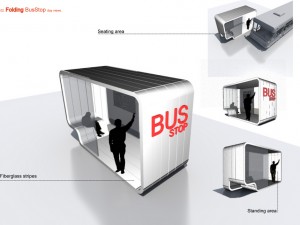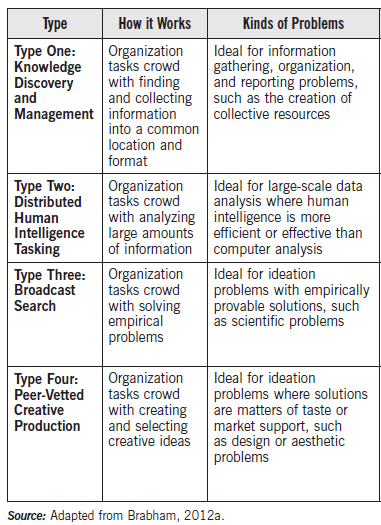This is the third article (link to article #1 and #2) on how to create open dialogue and citizen’s interaction by using crowdsourcing in public sector.
In previous articles we have looked at real examples how to solve information and knowledge problems with crowdsourcing in the public sector. In this article we shall look at other examples where crowdsourcing has been applied and present a typology (classification) that is based on work by Brabham (Daren C. Brabham).
Brabham has analyzed and carried out a study on how crowdsourcing has been used to collectively develop and vote for the best design of the bus and stops in Salt Lake City, Utah. But first we shall try to describe the difference between social media and crowdsourcing services. A fundamental characteristic that describes crowdsourcing is that it is based on a collective task that is produced, distributed across the network, a result that accrues to both parties. What we have described in previous articles. Social media, however, need not result in an outcome that accrues to the collective, their natures is more of giving users some form of self-affirmation or provide a communication channel. It is possible to solve problems through social media, depending on the type of problem. But crowdsourcing services YouBongo and others, are often better suited to solve specific tasks and problems.
To sum this difference, one can say that social media serves as a communication channel and that crowdsourcing is a process to solve a problem or produce something collective that creates value for all parties involved. NextStopDesign (nextstopdesign.com) was a competition aimed for everyone that wanted to submit design proposals for the next generation of bus stops that was launched in 2009 in Salt Lake City.
 Citizens had the opportunity to register and submit design proposals. In total citizens submitted 260 design proposals and a total of 3187 users registered to vote for the submitted proposals. No cash or reward was offered top three proposals that received the most votes and selected winners during the contest. Brabham’s article (Crowdsourcing public participation in transit planning) from 2010 describes theories and analyzes the contestant’s interviews about why they spent their own time to develop and produce design proposals for the contest. The result of what motivated citizens to contribute were distributed in a couple of areas that Brabham discuss in his article, a quick summary of the conclusion where;
Citizens had the opportunity to register and submit design proposals. In total citizens submitted 260 design proposals and a total of 3187 users registered to vote for the submitted proposals. No cash or reward was offered top three proposals that received the most votes and selected winners during the contest. Brabham’s article (Crowdsourcing public participation in transit planning) from 2010 describes theories and analyzes the contestant’s interviews about why they spent their own time to develop and produce design proposals for the contest. The result of what motivated citizens to contribute were distributed in a couple of areas that Brabham discuss in his article, a quick summary of the conclusion where;
- Increased career opportunities by developing their own skills and portfolio of design work
- Gain industry recognition
- Contribute to a collective effort, inspired by other people’s posts and discussions
- Amusing task where users had free opportunity to express their ideas
To successfully engage citizens is no simple task, but there is enough empirical evidence and a study of using crowdsourcing in varies situations to provide indications of success factors leading to desired result. The example on how to engaging citizens to help with design proposals are only one of several examples of successful projects where crowdsourcing has been used. The design proposal project fits into the Brabham’s category of public consultation, in his typology of areas where crowdsourcing is being used.
Typology of areas where crowdsourcing is often being used;

